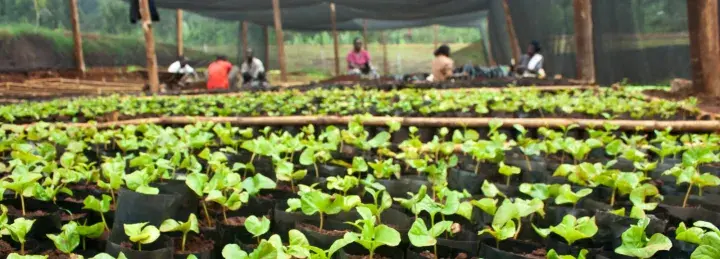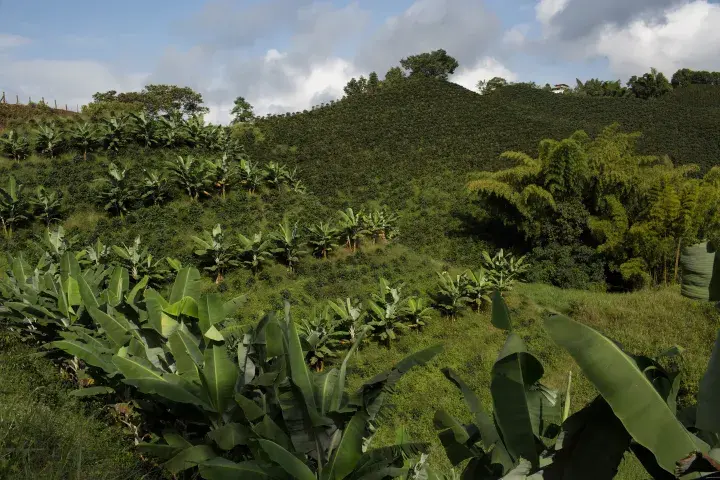The concept of living income is attracting interest globally. It is being increasingly recognised as an integral component in the UN Sustainable Development Goals. But while the idea can be universally understood and applied, the nature of living incomes – and strategies for achieving them – depends a great deal on the local context. That’s why collaboration between regional actors plays such a critical role in bridging the income gap.
The Living Income Community of Practice (LICOP) has been focusing its activities. This year it put Latin America in the spotlight. A recent workshop brought together more than 140 stakeholders, exploring the regional situation, showcasing success stories and best practices, and promoting collaboration between diverse actors working for a common purpose: to build pathways to living income for smallholder producers across Latin America.
Putting smallholder producers front and centre
Several expert speakers focused on smallholder producers themselves. As Jeremy Dufour of international food ingredient supplier, ofi, pointed out, producers know better than anyone what they need to prosper, and they know what they can afford to invest to provide good products farmed in an environmentally friendly way.
But producers are not a homogenous group, and they need support with strategies tailored to their size and characteristics. Jeremy described a four-year ofi project in Honduras involving more than 1,000 small-scale coffee farmers and their ultimate customer, the supermarket Aldi, which aimed to bridge the living income gap by improving market access and coffee quality.
It did this through a range of elements including training in agricultural best practices to increase productivity, digital certification schemes to increase product value, and investments in modern equipment such as solar driers to increase efficiency. Crucially, segmenting producers according to their income levels and aspiration allowed ofi to create better interventions.
Testing new approaches
It is disproportionately hard being a small-scale producer. José Madriz of CLAC – the Latin American and Caribbean Network of Fair Trade Small Producers and Workers – described just how seriously supply chain decisions can impact them.
Price cuts imposed by supermarkets, large retailer margins, and compliance costs all eat away at producer profits and thus their capacity to invest in improving their productivity, so they fall further behind larger producers – a vicious circle which creates an ever-widening living income gap.
What’s required, José argued, is for buyers to acknowledge the need to pay a minimum fairtrade price for sustainable commodities, benchmarked on real living wage data, and – in parallel – for experts to provide technical assistance to smallholders to farm more effectively.
IDH found that despite there being plenty of value in the coffee supply chain as a whole, little of it trickles down to the producers themselves. IDH has now developed a tool – the Income Driver Calculator – which can be used to estimate farmer income, assess the income gap, and model scenarios showing how different drivers can help to close it in specific cases.
IDH’s Susana Loaiza described a programme they’re working on with Colombian coffee producers, which incorporates these elements via three pillars: sector integration to bring farmers together, improved business models through which buyers guarantee more stable payments to producers, and increased productivity to raise profits and strengthen sustainability in the field.
Making diverse perspectives heard
Women, indigenous peoples, and the young all face particular livelihood challenges. Integrating their needs is essential for any strategy to be effective.
They may also have a range of different views on what wellbeing actually looks like: women, for example, tend to place more value on family relationships, health, and saving money for their children; while indigenous peoples are often more interested in collaborating among themselves and preserving cultural knowledge.
All such perspectives need to be acknowledged and included in living income strategies.
Rikolto embraces the diversity of perspectives in its efforts to improve living incomes across Latin America. Its Cajamarca platform in Peru fosters private and public, civil society, and academic collaboration to bridge the coffee sector’s living income gap. Rikolto’s Napoléon Molina and Lith Montes Quispe explained how the platform prioritises work on four aspects - economic, social, environmental and institutional – all supported by a governance structure that ensures fair representation and open dialogue.
LICOP will build on the success of this event with an in-person workshop and a series of field visits in Colombia in November.
This workshop will catalyse meaningful collaboration and exchange among key stakeholders in living income in Latin America. With a focus on practical, peer-to-peer learning, this event will empower participants to explore pathways for scaling impact and improving producers' livelihoods.
Express your interest for the in-person workshop in Colombia here.



